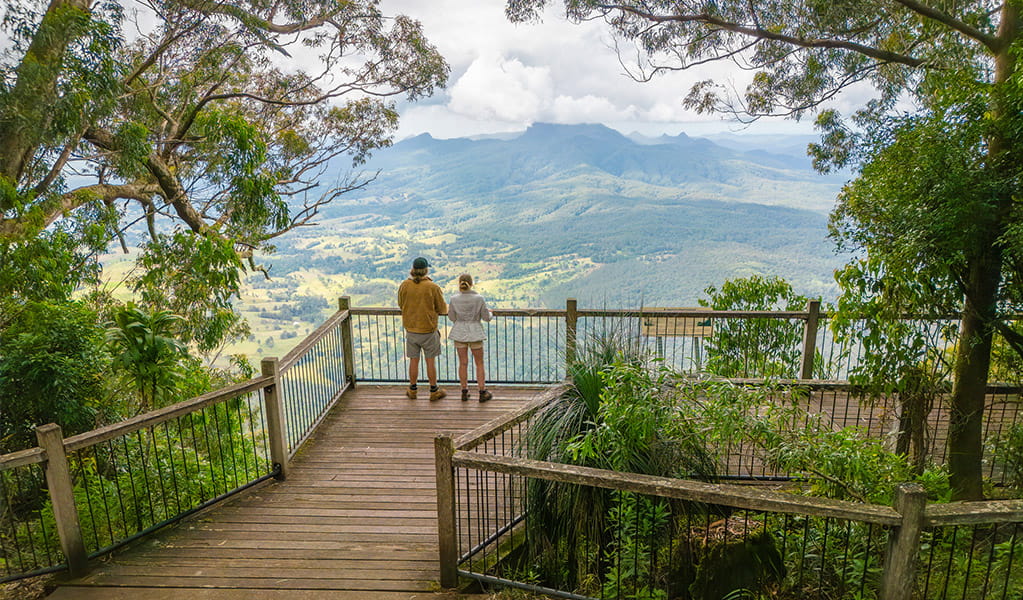Blackbutt lookout picnic area
Border Ranges National Park
Overview
Blackbutt lookout picnic area in Border Ranges National Park is a popular picnic area next to a scenic lookout offering views of Tweed Valley.
- Type
- Picnic areas
- Where
- Border Ranges National Park in North Coast
- Accessibility
- Medium
- Entry fees
- Park entry fees apply
- Opening times
Blackbutt lookout picnic area is always open, but may have to close at times due to poor weather or fire danger.
- What to
bring - Drinking water, clothes for all weather conditions, sunscreen, hat
- Please note
- This park is in a remote location, so please come well-prepared, and tell a family member or friend about your travel plans.
- Consider having reasonably full fuel tanks before arriving as there are no service stations near the park. The closest fuel is at Kyogle, Nimbin or Mount Burrell.
- There's limited mobile reception in this park
While visiting Border Ranges National Park be sure to stop by Blackbutt lookout picnic area to enjoy a dramatic vista across a spectacular geological formation.
This popular picnic spot sits on the Tweed Caldera escarpment edge, with a lookout platform offering incredible views out over Wollumbin-Mount Warning and the whole Tweed Valley from the edge of the Tweed Caldera escarpment.
Tweed Caldera is one of the biggest erosion calderas in the southern hemisphere and one of the largest in the world. It’s also one of the few places on earth where the erosion process can be seen all the way down to the underlying pre-volcanic sedimentary and metamorphic rocks, providing geology enthusiasts with a wonderful opportunity to test their knowledge of geological processes.
Take a virtual tour of Blackbutt lookout picnic area captured with Google Street View Trekker.
Map
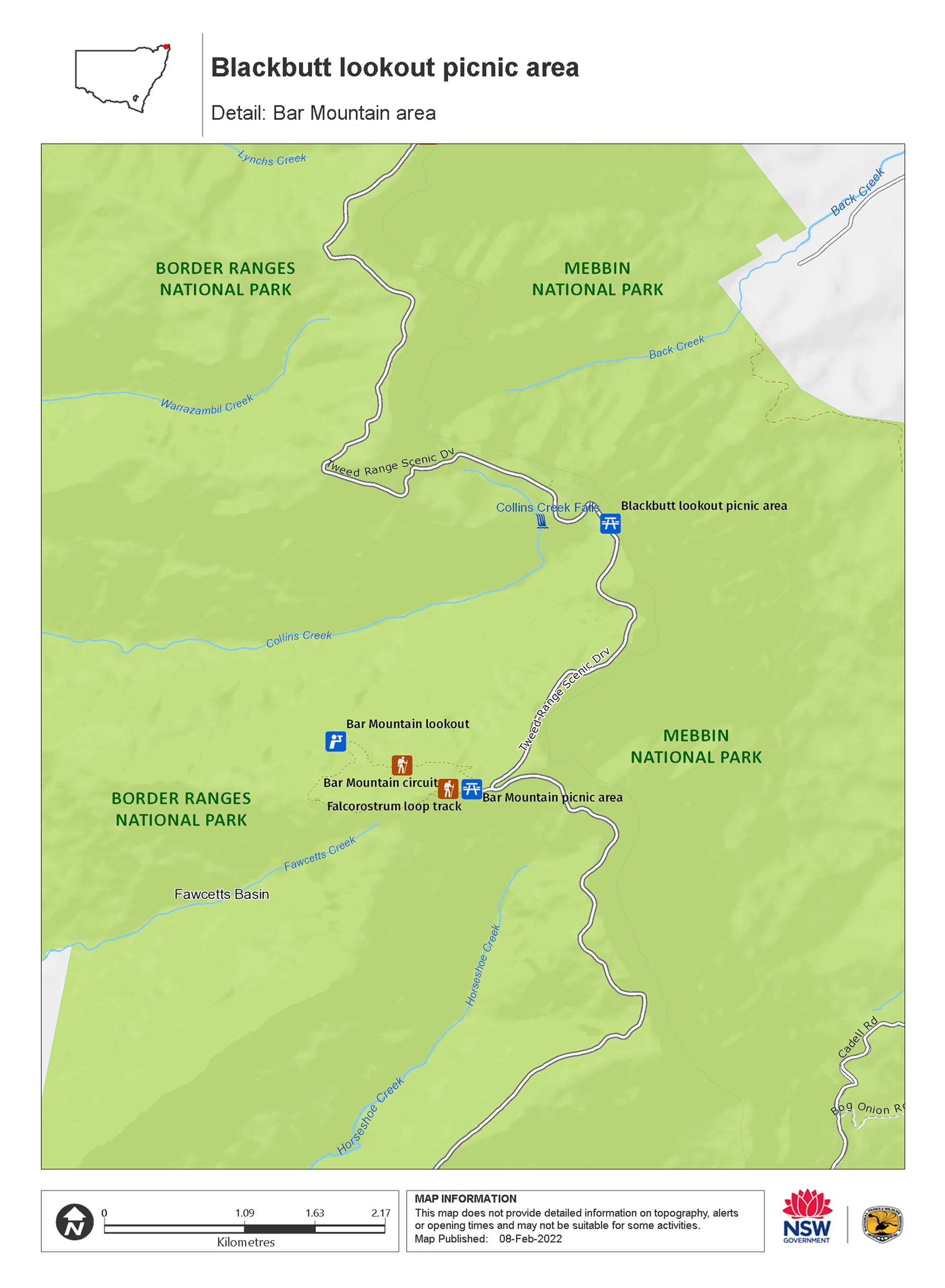
Map legend

Local alerts
For the latest updates on fires, closures and other alerts in this area, see https://www.nationalparks.nsw.gov.au/things-to-do/picnic-areas/blackbutt-lookout-picnic-area/local-alerts
General enquiries
- National Parks Contact Centre
- 7am to 7pm daily
- 1300 072 757 (13000 PARKS) for the cost of a local call within Australia excluding mobiles
- parks.info@environment.nsw.gov.au
Park info
- in Border Ranges National Park in the North Coast region
Border Ranges National Park is always open but may have to close at times due to poor weather or fire danger.
-
Park entry fees:
$8 per vehicle per day.
Buy annual pass.
Visitor info
All the practical information you need to know about the Blackbutt lookout picnic area.
Getting there and parking
Blackbutt lookout picnic area is in the eastern precinct of Border Ranges National Park. To get there:
From Murwillumbah:
- Travel south-west on Kyogle Road to Lillian Rock, then turn right onto Williams Road.
- Travel along Williams Road 2.7km to Creegans Road. Travel 5.8km along Creegans Road to the park boundary.
- From the park boundary, travel 10.4km along Tweed Range Scenic Drive to Blackbutt lookout, which is clearly signposted on your right.
From Lismore:
- Travel north to Nimbin, then continue north on Blue Knob Road to Kyogle-Murwillumbah Road.
- Turn left (west) towards Kyogle, continue for 5km to Williams Road, then turn right onto Williams Road.
- Travel along Williams Road 2.7km to Creegans Road. Travel 5.8km along Creegans Road to the park boundary.
- From the park boundary, continue 7.3km along Tweed Range Scenic Drive to Bar Mountain picnic area, which is clearly signposted on your left.
From Kyogle:
- Travel north along Summerland Way 14km to Wiangaree
- At Wiangaree, turn right onto Lynches Creek Road, then travel east along Lynches Creek Road 12km to Forest Road, following the signs to Border Ranges National Park.
- Turn right onto Forest Road and continue 4.5km to the park boundary
- From here, continue on Tweed Range Scenic Drive for 22.1km to Blackbutt lookout, which is clearly signposted on your left.
Road quality
- Unsealed roads
Vehicle access
- 2WD vehicles
Weather restrictions
- 4WD required in wet weather
Parking
Parking is available in an informal, unsealed gravel carpark directly beside the lookout, a very short walk from the attraction.
Best times to visit
There are lots of great things waiting for you in Border Ranges National Park. Here are some of the highlights.
Autumn
A picnic at Border Loop lookout and picnic area is a must during autumn. It's also a popular spot to see the historic Border Loop railway line.
Spring
The perfect time to get away from it all on a family camping trip. Sheepstation Creek campground is a great base for exploring Border Ranges National Park.
Summer
Watching the sunrise from Pinnacle lookout offers the best views of the crater escarpment, Wollumbin-Mount Warning and the coast. You're bound to find it a breathtaking experience.
Winter
Take in the park's scenery from the comfort of your car or motor home as you drive along the Tweed Range Scenic drive. Be sure to take some breaks along the way though – you don't want to miss the views.
Weather, temperature and rainfall
Summer temperature
Average
18°C and 30°C
Highest recorded
42.9°C
Winter temperature
Average
8°C and 22°C
Lowest recorded
-0.3°C
Rainfall
Wettest month
February
Driest month
September
The area’s highest recorded rainfall in one day
321mm
Facilities
Toilets
- Non-flush toilets
Picnic tables
Barbecue facilities
- Wood barbecues (bring your own firewood)
Carpark
Step-free access
The lookout and picnic area are flat and step-free. There's a raised walkway with handrails that leads to the toilets.
There's no pathway to the picnic tables - you'll need to cross over hard-packed ground to reach them.
Maps and downloads
Accessibility
Disability access level - medium
Blackbutt lookout picnic area is flat and step-free, with the following accessible facilities:
- Accessible toilets that have a raised walkway with handrails leading to the entrance
- Accessible picnic tables set on concrete slabs
There's no path to the picnic tables – you'll need to cross over flat, hard-packed ground to reach them.
Prohibited
Gathering firewood
Pets
Pets and domestic animals (other than certified assistance animals) are not permitted. Find out which regional parks allow dog walking and see the pets in parks policy for more information.
Smoking
NSW national parks are no smoking areas.
Learn more
Blackbutt lookout picnic area is in Border Ranges National Park. Here are just some of the reasons why this park is special:
Aboriginal heritage
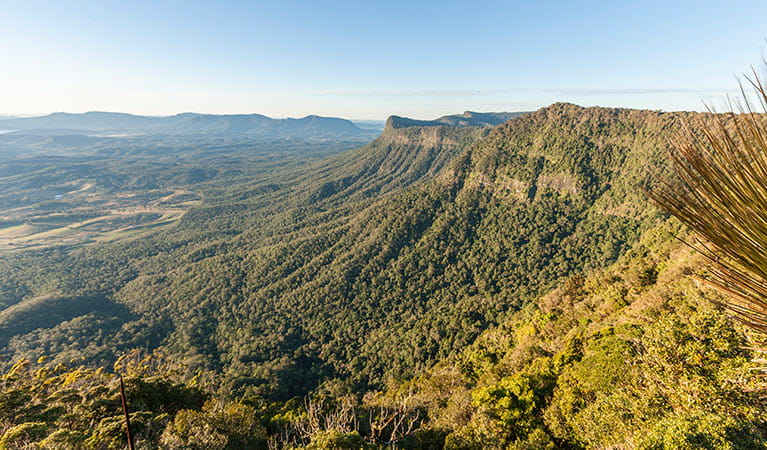
The dramatic landscapes of the Border Ranges National Park echo the historical ties connecting the region's Aboriginal people to Country. The Githabul People trace their identity and spirituality to this Country and it is central to their Dreaming. The park protects many ancient sites and continues to be a place of great significance today.
Abundant wildlife
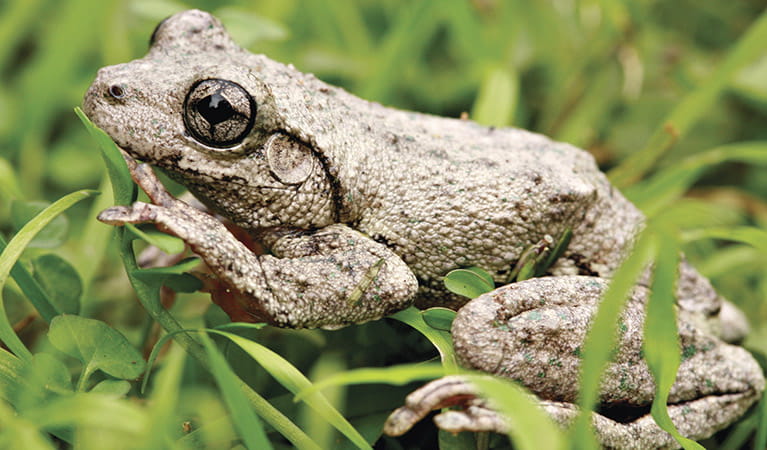
Being part of the Gondwana Rainforests of Australia World Heritage Area, makes this park a truly special place to visit. This region has the highest concentration of marsupial, bird, snake and frog species in Australia, so you're bound to come across a cute creature or two during your visit. While you're in the heart of this remarkable rainforest make sure you listen out for the call of the Alberts lyrebird, and while you're picnicking, keep your eye out for the rare, local fauna that thrive in this lush, protected wilderness.
- Border Loop walk Walk the short and easy Border Loop walk through World Heritage-listed rainforest. Enjoy spectacular views from the lookout and finish with a picnic at the end.
- Border Ranges 360 experiences Discover some of the rare and remarkable animals, plants and habitats that make Border Ranges National Park special, with our interactive 360-degree images.
Picture perfect
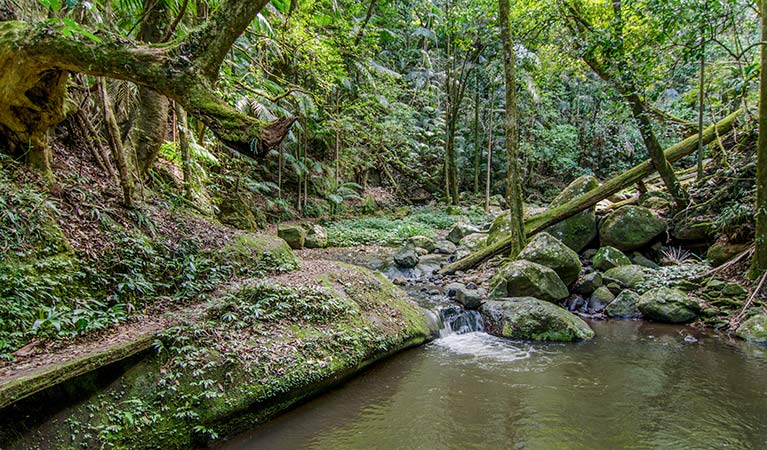
A landscape photographer's dream, you'll be spoilt for choice in trying to capture the sheer scale and beauty of this epic rainforest from the many lookouts dotted throughout the park. Be sure to carry your camera up to the Pinnacle lookout at sunrise for a breathtaking birds-eye view of the crater escarpment all the way down to the NSW coastline. Don't forget to change your camera setting to panoramic for the perfect mantelpiece shot.
World Heritage wonder
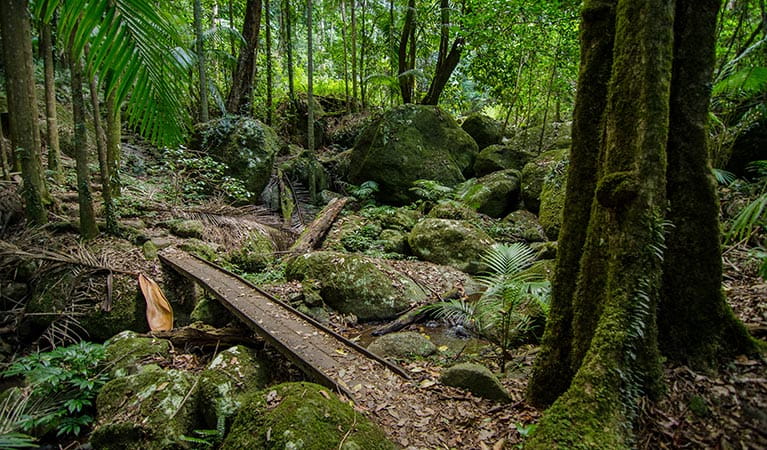
The rainforests of the Border Ranges National Park are part of the Gondwana Rainforests of Australia World Heritage Area. World Heritage Areas are irreplaceable sources of life and inspiration - places of such value that the international community has agreed they must be conserved for all time. You can explore this World Heritage-listed rainforest on one of the many walking tracks, like the short Pinnacle walk that provides spectacular views of Wollumbin and the Tweed Valley 1km below.
- Bar Mountain circuit Take the short and easy Bar Mountain circuit walk to the lookout where you’ll enjoy panoramic views of World Heritage-listed rainforest.
- Border Loop walk Walk the short and easy Border Loop walk through World Heritage-listed rainforest. Enjoy spectacular views from the lookout and finish with a picnic at the end.
- Border Ranges 360 experiences Discover some of the rare and remarkable animals, plants and habitats that make Border Ranges National Park special, with our interactive 360-degree images.
- Brindle Creek picnic area Pack up a picnic and set off along the Tweed Range Scenic drive to explore Border Ranges National Park. Stop off at Brindle Creek picnic area for a picnic and walk.
Plants and animals protected in this park
Animals
-
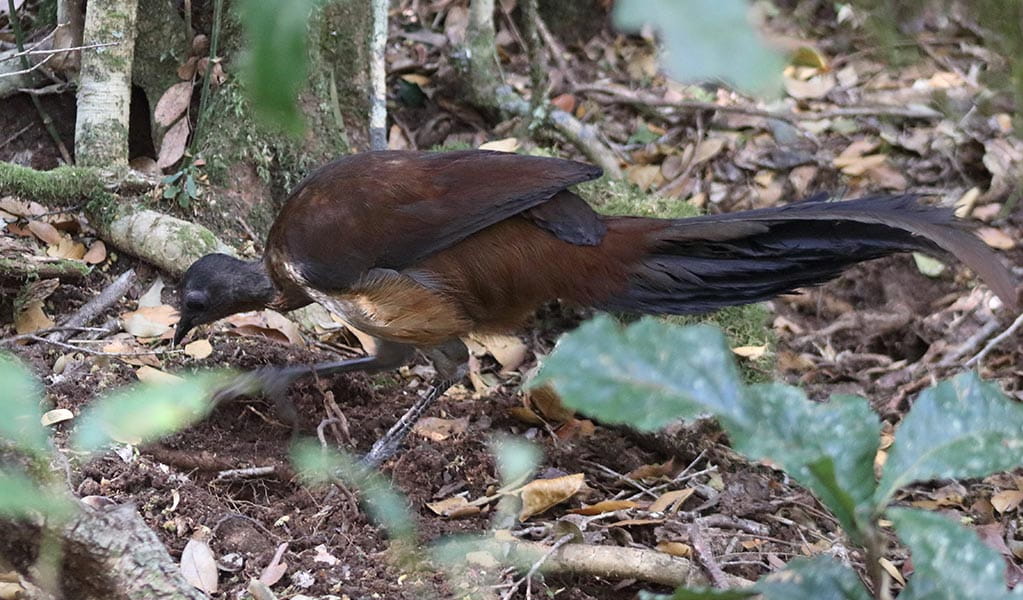
Albert's lyrebird (Menura alberti)
The Albert’s lyrebird is much rarer than the superb lyrebird. Distinguished by its richer brown plumage and less elaborate tail feathers, it’s protected as a threatened species in NSW.
-
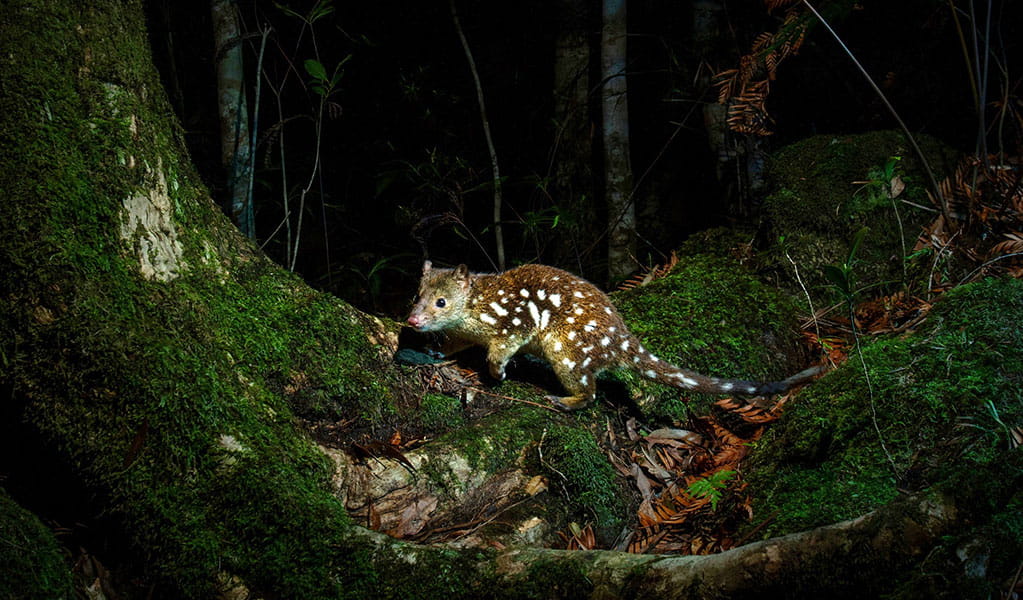
Spotted-tailed quoll (Dasyurus maculatus)
The spotted-tailed quoll is the largest remaining carnivorous marsupial on the Australian mainland. It’s protected as a vulnerable species in NSW.
-
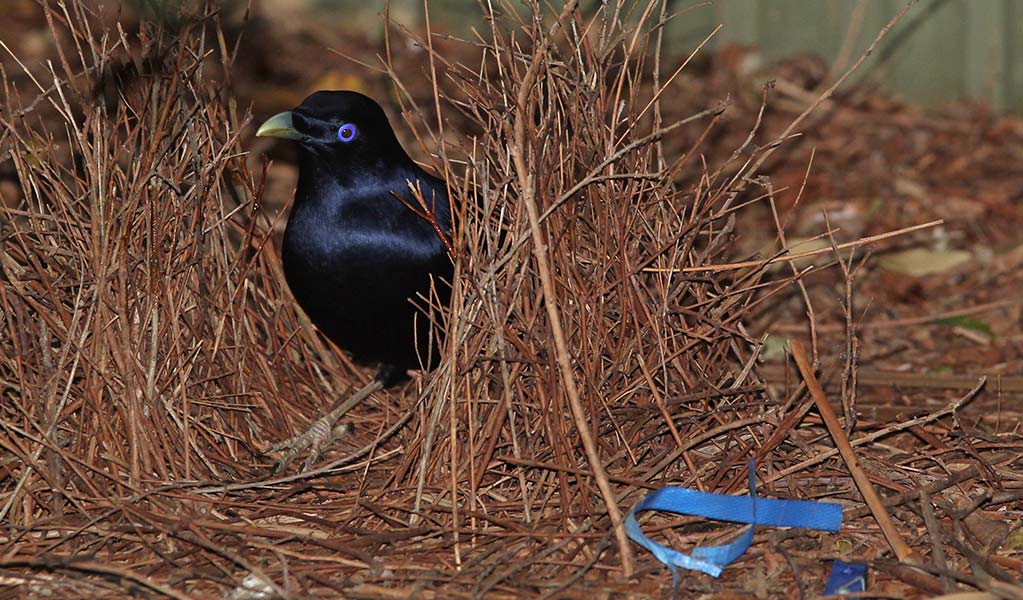
Satin bowerbird (Ptilonorhynchus violaceus)
With vibrant blue-violet eyes and curious antics, the satin bowerbird is a favourite for bird watching and easy to spot as it forages for food in open forest. Relatively common across eastern Australia, in NSW they’re found in coastal rainforests and adjacent woodlands and mountain ranges.
-
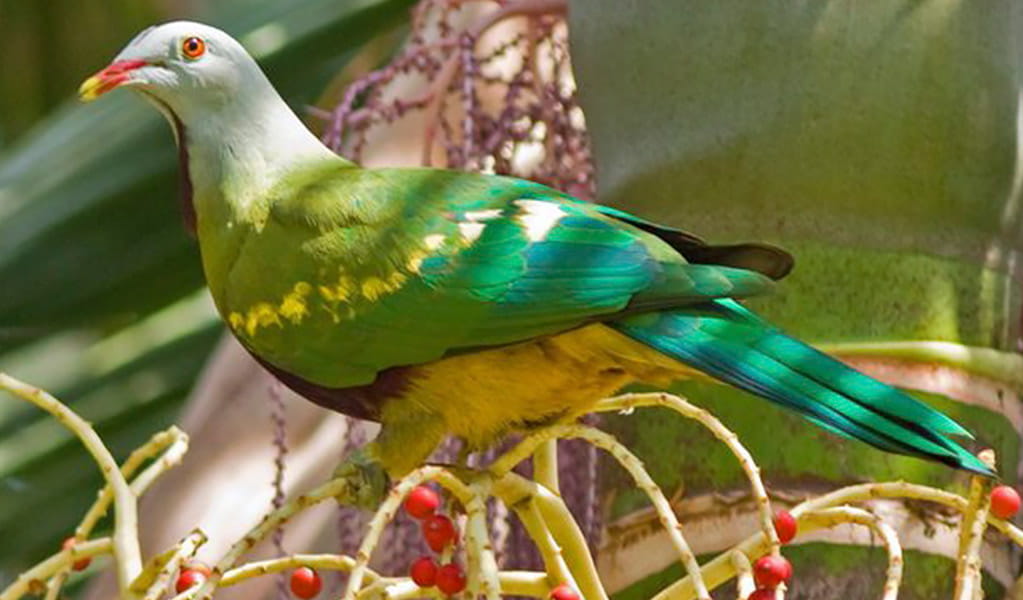
Wompoo fruit-dove (Ptilinopus magnificus)
The wompoo fruit-dove is a marvellously multi-coloured pigeon that makes its home in rainforest along coastal ranges from mid-north NSW to southern Queensland. It’s protected as a vulnerable species in NSW.
-
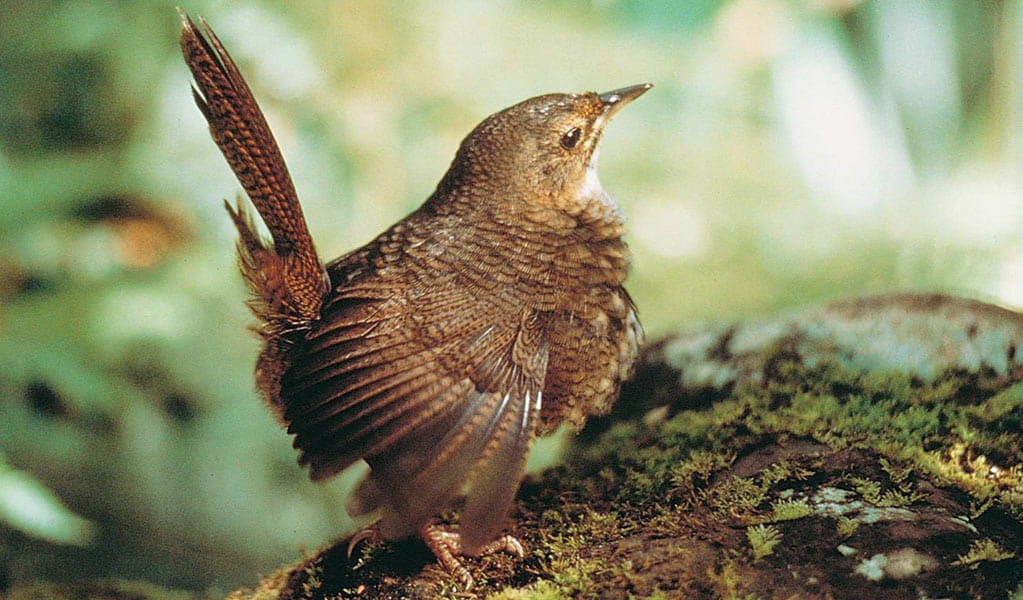
Rufous scrub-bird (Atrichornis rufescens)
The vulnerable rufous scrub-bird is a small, ground-foraging bird that lives only in isolated rainforest areas of south-eastern Australia.
-

Common ringtail possum (Pseudocheirus peregrinus)
Commonly found in forests, woodlands and leafy gardens across eastern NSW, the Australian ringtail possum is a tree-dwelling marsupial. With a powerful tail perfectly adapted to grasp objects, it forages in trees for eucalypt leaves, flowers and fruit.
-
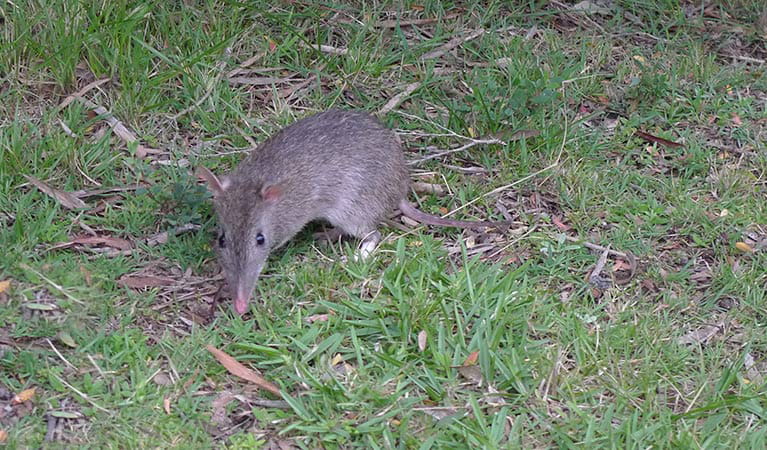
Long-nosed bandicoot (Perameles nasuta)
A nocturnal marsupial and one of the smaller Australian native animals, the long-nosed bandicoot is found across eastern Australia. Populations in the Sydney region have dwindled since European settlement, leaving only endangered colonies in inner western Sydney and at North Head, near Manly. The long-nosed bandicoot has grey-brown fur and a pointed snout which it uses to forage for worms and insects.
-
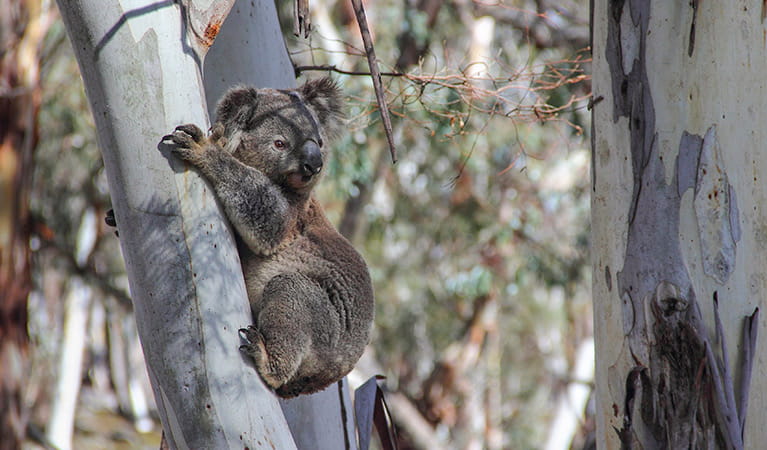
Koala (Phascolarctos cinereus)
One of the most renowned Australian animals, the tree-dwelling marsupial koala can be found in gum tree forests and woodlands across eastern NSW, Victoria and Queensland, as well as in isolated regions in South Australia. With a vice-like grip, this perhaps most iconic but endangered Australian animal lives in tall eucalypts within a home range of several hectares.
-
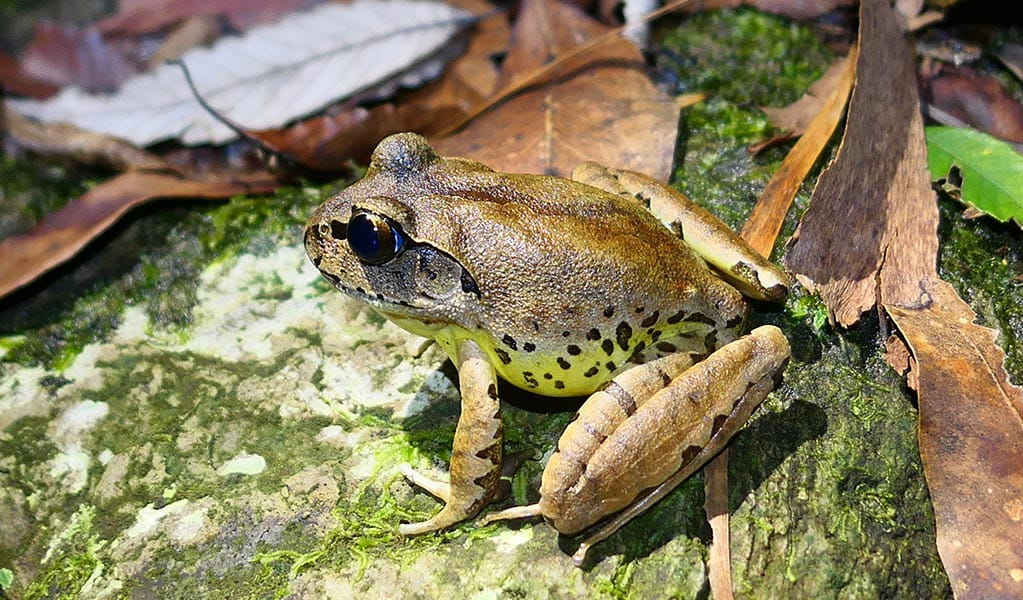
Fleay's barred frog (Mixophyes fleayi)
The Fleay’s barred frog is an endangered species restricted to rainforest stream habitats in north-east NSW and south-east Queensland.
-
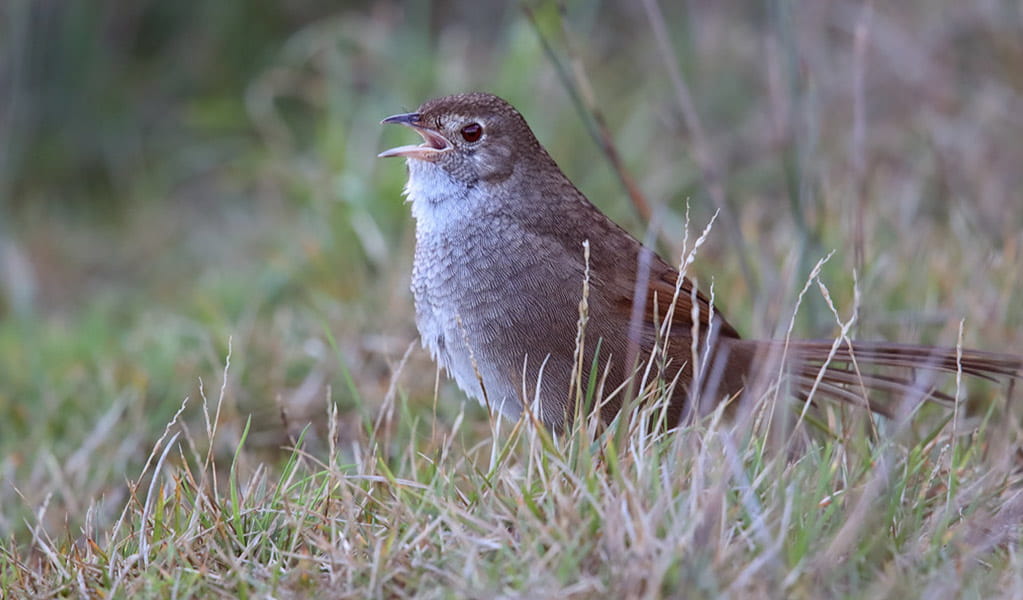
Eastern bristlebird (Dasyornis brachypterus)
The endangered eastern bristlebird is a shy, ground-dwelling songbird. Less than 2,500 birds are left in the wild, restricted to 3 isolated areas in eastern NSW and southern Queensland.
Plants
-

Grass tree (Xanthorrea spp.)
An iconic part of the Australian landscape, the grass tree is widespread across eastern NSW. These Australian native plants have a thick fire-blackened trunk and long spiked leaves. They are found in heath and open forests across eastern NSW. The grass tree grows 1-5m in height and produces striking white-flowered spikes which grow up to 1m long.

